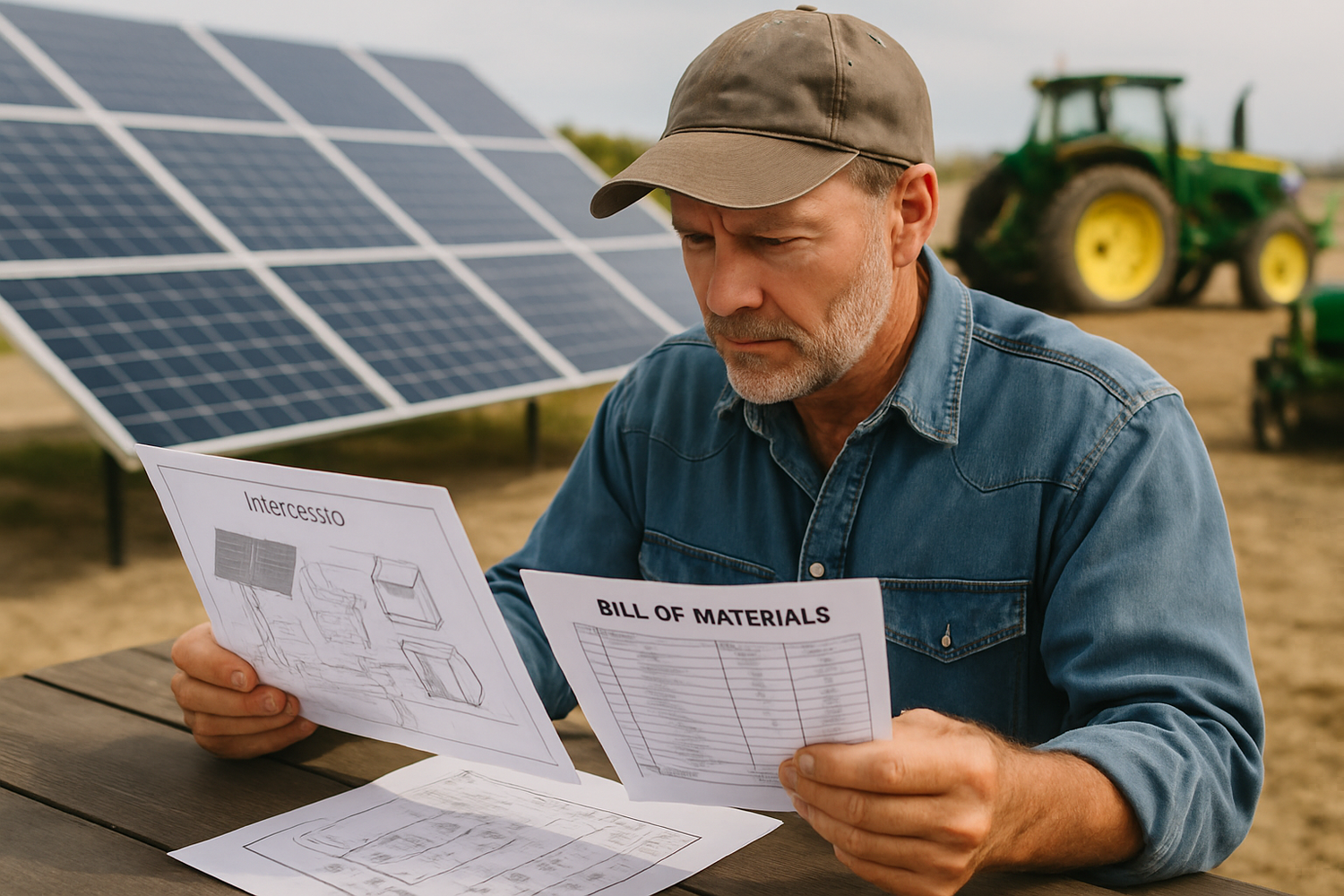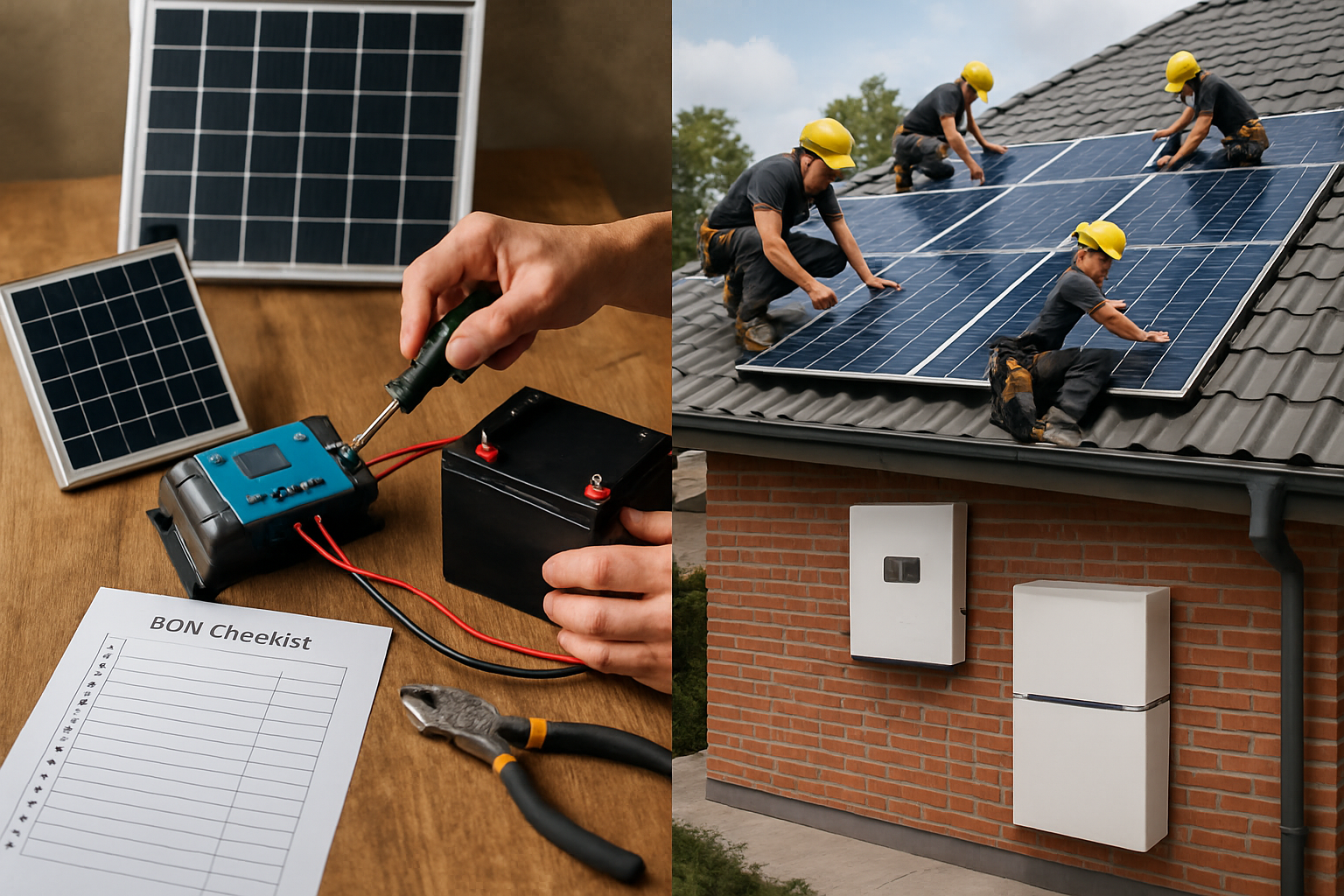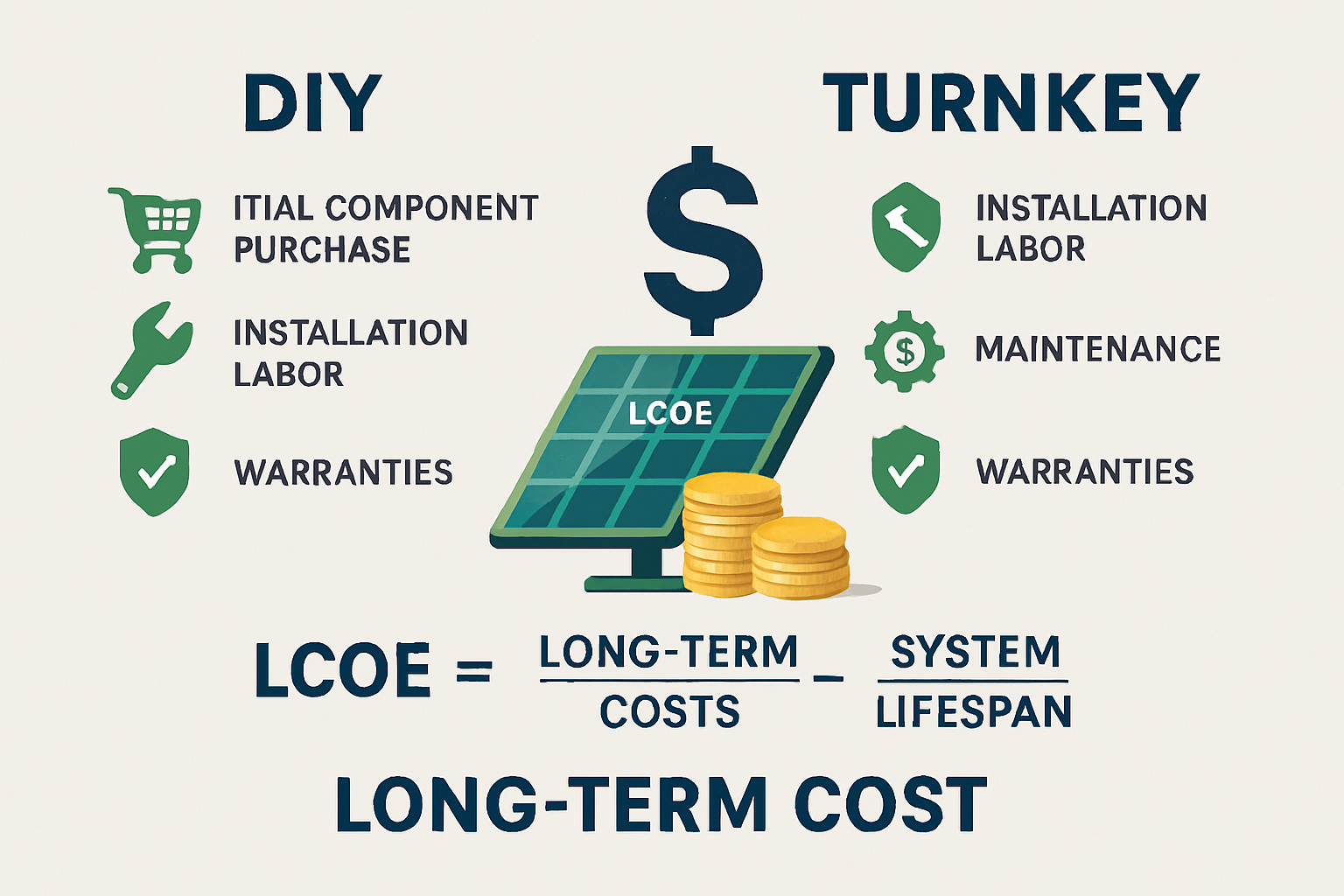Modern agriculture faces increasing demands for reliable and sustainable energy. Farm microgrids offer a powerful solution, providing energy independence and resilience against grid outages. When considering a microgrid for your farm, a critical decision arises: should you pursue a Do-It-Yourself (DIY) Bill of Materials (BOM) approach, or invest in an Engineering, Procurement, and Construction (EPC) turnkey solution?
This discussion examines the economic implications, technical complexities, and long-term value of both pathways, helping you determine the best fit for your agricultural operations.
Understanding Farm Microgrids for Agricultural Operations
The Role of Energy Independence in Farming
Farms rely heavily on consistent power for irrigation, climate control, machinery, and various processing tasks. Grid instability, rising electricity costs, and the desire for environmental stewardship make energy independence a compelling goal. A farm microgrid provides a localized energy system that can operate independently from the main grid, ensuring continuous power supply and often reducing operational expenses.
Key Components of a Farm Microgrid
A typical farm microgrid integrates several core technologies:
- Solar Photovoltaic (PV) Panels: These convert sunlight into electricity. Solar is uniquely modular, deployable at large scales as well as small scales such as rooftop solar.
- Energy Storage Systems (ESS): Often utilizing advanced lithium iron phosphate (LiFePO4) batteries, these systems store excess solar energy for use during cloudy periods or at night. LiFePO4 batteries offer high performance, safety, and reliability for demanding agricultural environments.
- Solar Inverters: These convert the direct current (DC) electricity from solar panels and batteries into alternating current (AC) for farm equipment. Hybrid inverters are particularly useful, managing power flow between solar, batteries, and the grid.
- Control Systems: Intelligent software and hardware manage the entire microgrid, optimizing energy generation, storage, and consumption.
The DIY Bill of Materials (BOM) Approach: Pros and Cons
The DIY BOM approach involves you, the farm owner, taking direct responsibility for designing, sourcing, and installing each component of your microgrid. You purchase individual items like solar panels, LiFePO4 batteries, and inverters directly from suppliers.
Cost Savings and Customization Potential
A primary appeal of the DIY BOM method is the potential for lower upfront costs. By directly sourcing components, you might avoid the markups associated with professional installers. This approach offers significant control over component selection, allowing for highly customized systems tailored to specific farm needs, such as powering a particular pump or a remote barn. For instance, global module average selling prices have shown a downward trend as cumulative global module shipments increase, suggesting opportunities for cost-effective component acquisition.
Hidden Costs and Technical Challenges
While attractive, the DIY route carries substantial hidden costs and technical challenges. Designing a safe and efficient microgrid requires specialized knowledge in electrical engineering, load calculations, and system integration. Improper design can lead to inefficiencies, safety hazards, or system failures. Permitting and interconnection processes are often complex and vary by region, demanding significant time and expertise to navigate. Furthermore, managing multiple warranties from different component manufacturers can be cumbersome if an issue arises.
Consider the time investment required for research, procurement, installation, and troubleshooting. This time could otherwise be spent on core farming activities. The Solar Futures Study highlights that "soft costs" (non-hardware costs like permitting, inspection, and customer acquisition) represent a significant portion of overall system costs, even for residential and utility-scale PV.

The EPC Turnkey Solution: Benefits and Considerations
An EPC turnkey solution involves hiring a single company to handle every aspect of your microgrid project, from initial design and engineering to procurement, construction, and commissioning. You receive a fully functional system with minimal direct involvement.
Professional Expertise and Streamlined Implementation
EPC providers bring extensive experience and technical expertise. They manage the entire project lifecycle, ensuring optimal system design, compliance with all regulations, and efficient installation. This streamlined process reduces the burden on your farm staff and minimizes potential delays. Professional installers often have established relationships with suppliers, potentially securing better pricing or more reliable components. This approach mitigates the risks associated with complex technical tasks and regulatory hurdles.
Long-Term Reliability and Support
A key advantage of a turnkey solution is the comprehensive warranty and ongoing support. EPC companies typically offer system-level warranties, covering all components and installation work. This simplifies maintenance and troubleshooting, as you have a single point of contact for any issues. Many providers also offer long-term maintenance contracts, ensuring your microgrid operates at peak efficiency for years. This focus on long-term performance contributes significantly to the system's overall reliability and value.
Financial Comparison: DIY BOM vs. EPC Turnkey
The financial decision between DIY and turnkey extends beyond initial component costs. You need to consider the total cost of ownership (TCO) and potential return on investment (ROI).
Initial Investment vs. Total Cost of Ownership (TCO)
While DIY might offer lower upfront material costs, the TCO can be higher due to unforeseen expenses, time investment, and potential performance issues. EPC solutions often have a higher initial price tag but can offer a lower TCO through optimized design, professional installation, and robust warranties. The following table illustrates a simplified comparison:
| Cost Category | DIY BOM Approach | EPC Turnkey Solution |
|---|---|---|
| Component Costs | Direct purchase, potentially lower per unit | Includes supplier markups, but potentially bulk discounts |
| Design & Engineering | Your time and effort, or consultant fees | Included in service, professional expertise |
| Permitting & Compliance | Your time and effort, potential rejections/delays | Managed by professionals, fewer delays |
| Installation Labor | Your time and effort, or hired contractors | Professional crew, efficient installation |
| Tools & Equipment | Purchase or rental costs | Provided by installer |
| Warranty & Support | Individual component warranties, self-troubleshooting | System-level warranty, dedicated support |
| Risk of Errors/Rework | Higher, due to lack of experience | Lower, due to professional execution |
| Time Investment | Significant personal time required | Minimal personal time, project managed |
Public procurement, which accounts for a significant portion of GDP in many countries, often focuses on upfront acquisition costs. However, including operating costs in the evaluation can lead to more environmentally conscious and cost-effective long-term solutions. This principle applies equally to private investments like farm microgrids; a holistic view of costs is crucial.
Evaluating Return on Investment (ROI)
The ROI for a farm microgrid comes from reduced electricity bills, avoided outage costs, and potential revenue from selling excess power (if grid-tied). A professionally designed and installed system is more likely to operate efficiently and reliably, maximizing these benefits over its lifespan. While a DIY system might have a quicker payback period on paper due to lower initial outlay, a less efficient or unreliable DIY system could lead to higher operational costs and reduced savings over time, ultimately diminishing its long-term ROI.
Making the Right Choice for Your Farm
Assessing Your Resources and Risk Tolerance
Your decision hinges on a realistic assessment of your farm's resources and your comfort with risk. Do you or your staff possess the technical expertise for electrical design, installation, and troubleshooting? Do you have ample time to dedicate to project management, sourcing, and regulatory compliance? If your technical skills are limited or your time is constrained, the risks and hidden costs of a DIY approach could quickly outweigh any initial savings.
Case Study Example
Consider two hypothetical farms. Farm A, a small-scale organic operation, requires a basic off-grid system for a single pump and lighting. The owner has extensive electrical experience and ample time during the off-season. A DIY BOM approach, carefully planned and executed, could be cost-effective here. Farm B, a large dairy farm, needs a complex microgrid integrating multiple loads, cold storage, and processing equipment, with critical uptime requirements. For Farm B, the reliability, comprehensive warranties, and expert integration offered by an EPC turnkey solution would likely provide superior long-term value and peace of mind, despite the higher initial investment.
Empowering Your Farm's Energy Future
Choosing between a DIY BOM and an EPC turnkey solution for your farm microgrid is a strategic decision. It requires a thorough evaluation of initial costs, hidden expenses, technical capabilities, and long-term operational goals. While the DIY route offers customization and potential upfront savings, it demands significant expertise and time. An EPC turnkey solution, though a larger initial investment, provides professional assurance, streamlined implementation, and robust long-term support. By carefully weighing these factors, you can select the path that best empowers your farm with reliable, sustainable, and cost-effective energy independence.
Frequently Asked Questions About Farm Microgrids
What is a farm microgrid?
A farm microgrid is a self-contained energy system that generates, stores, and distributes electricity to power agricultural operations. It can operate connected to the main grid or independently, providing energy resilience and often integrating renewable sources like solar.
How much can a farm microgrid save me?
Savings vary significantly based on your farm's energy consumption, local electricity rates, system size, and financing. Microgrids can reduce or eliminate electricity bills, avoid costly downtime from grid outages, and potentially generate revenue if you sell excess power back to the grid. A detailed energy audit and financial analysis can provide a more precise estimate.
Are there incentives for farm microgrids?
Many regions offer incentives for renewable energy and energy storage systems, which can apply to farm microgrids. These may include tax credits, grants, rebates, or favorable loan programs. We recommend consulting local energy agencies or a qualified EPC provider to understand available incentives in your area.
What are the main risks of a DIY microgrid?
The primary risks of a DIY microgrid include improper design leading to inefficiency or safety hazards, component incompatibility, difficulty navigating complex permitting processes, lack of comprehensive warranties, and significant personal time investment. These factors can lead to higher overall costs and reduced system reliability.
References
- Solar Futures Study, U.S. Department of Energy.
- Renewable Energy for Industry, International Energy Agency (IEA), 2017.





Leave a comment
All comments are moderated before being published.
This site is protected by hCaptcha and the hCaptcha Privacy Policy and Terms of Service apply.